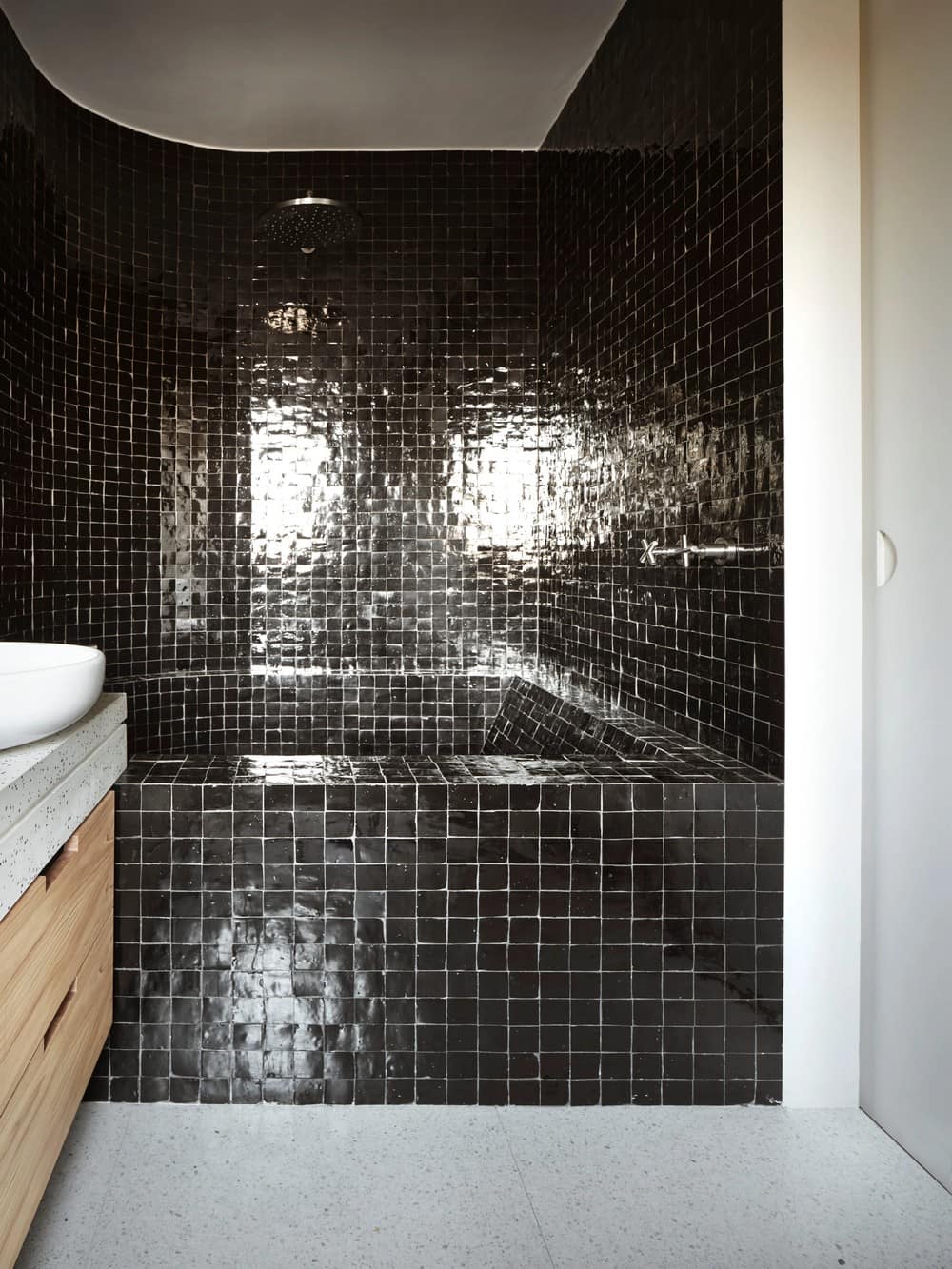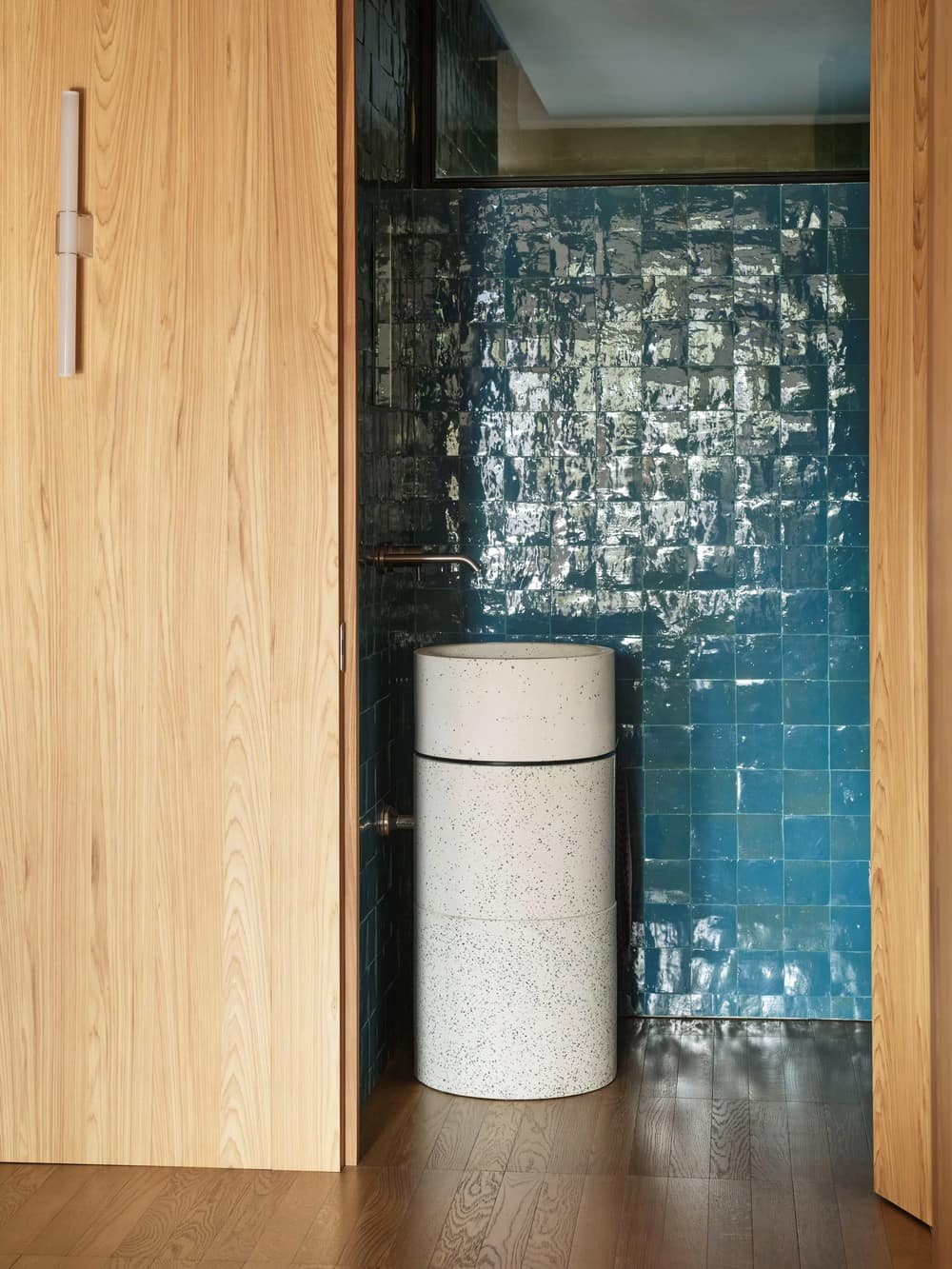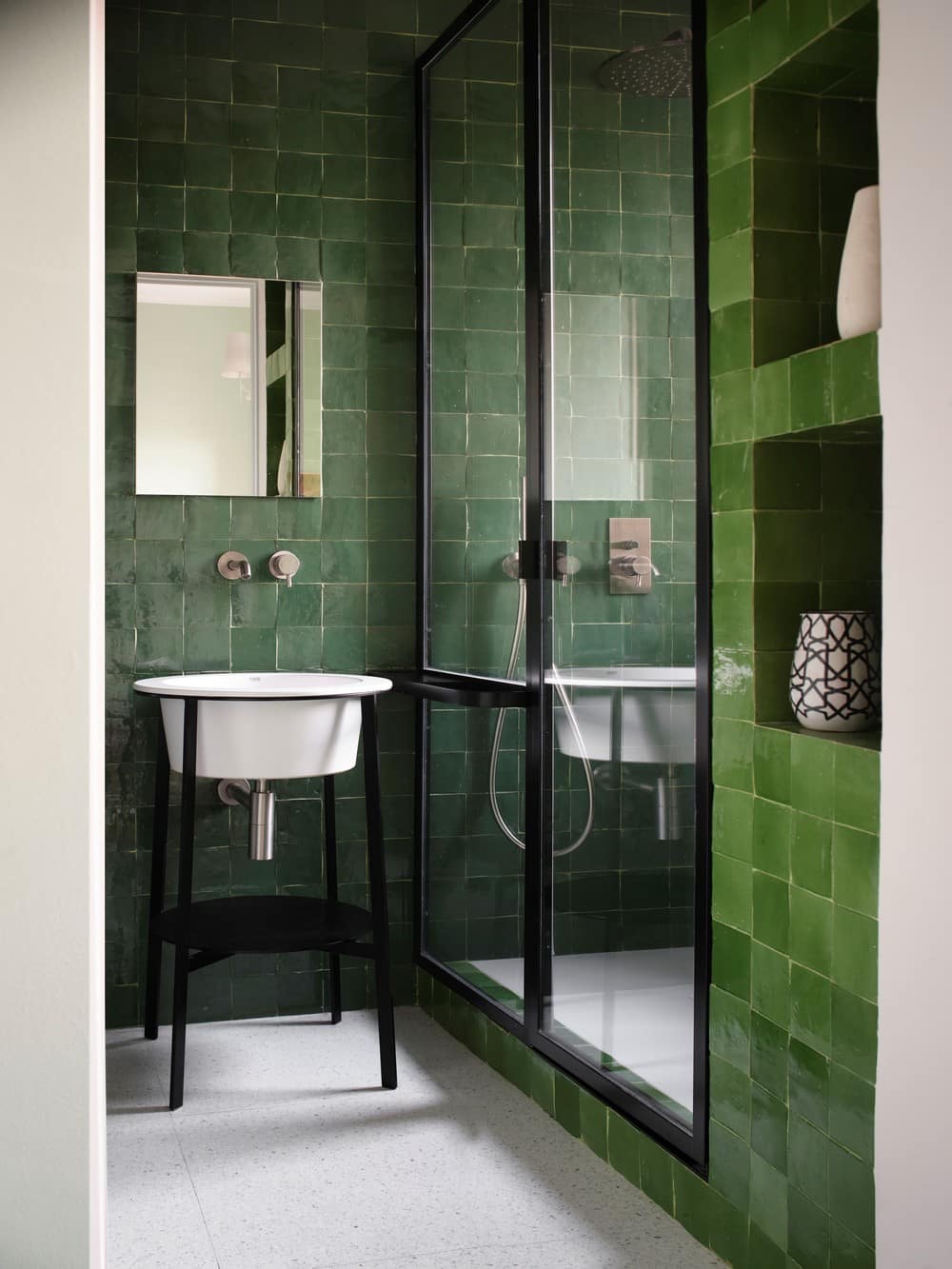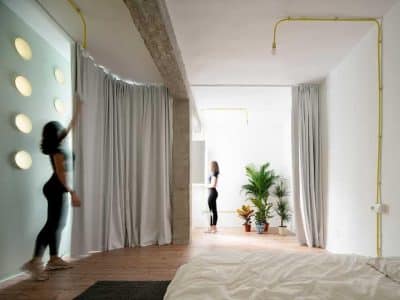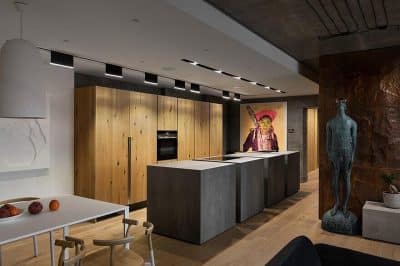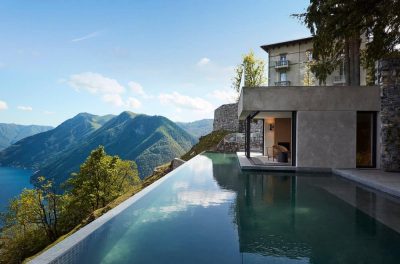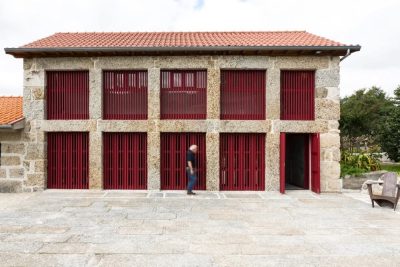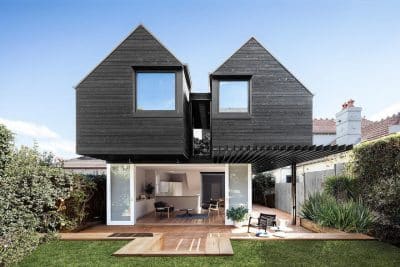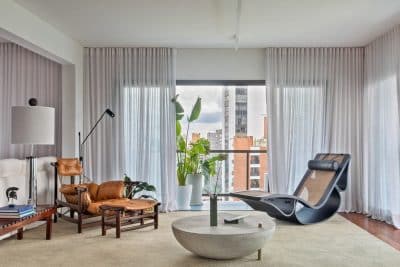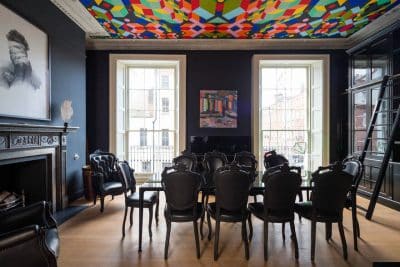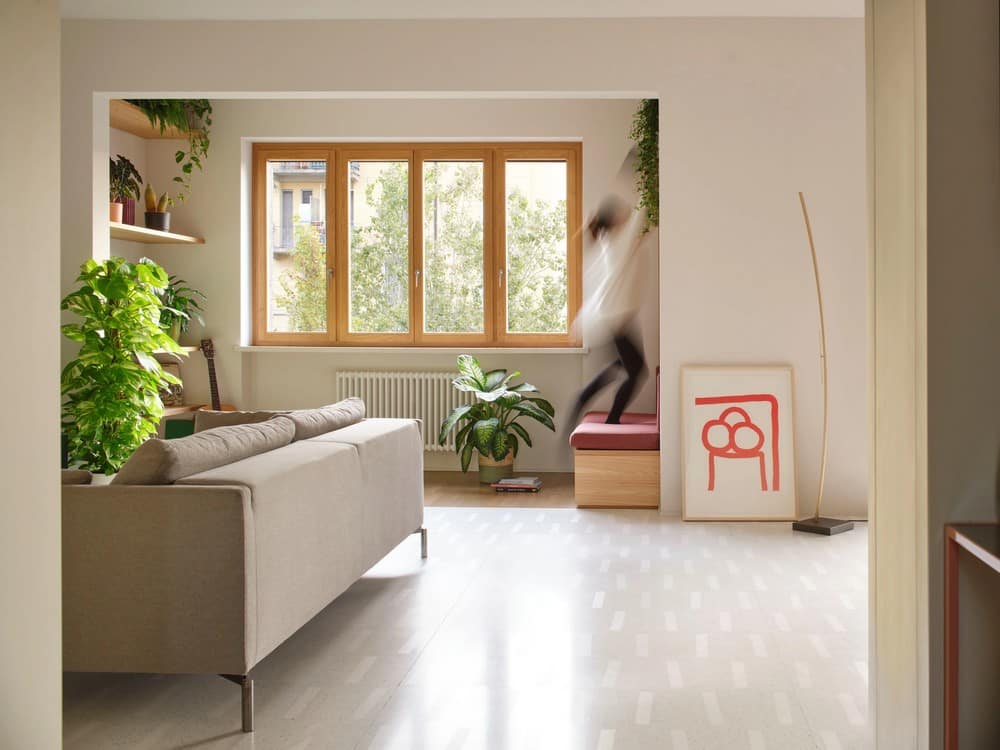
Project: A Material Wonderland House
Architects: ATOMAA
Lead Architects: Cesare Galligani, Andrea Del Pedro Pera, Umberto Maj
Location: Milan, Italy
Year: 2022
Photographs: Alberto Strada
“Matter lies asleep, absorbed in its natural condition, until it is discovered by a glance […] that rests on it […] investigating it, fragmenting it, […] and then calmly caressing it” – Fernando Espuelas, Madre Materia “Addio casa!” In a 1960s building, built as well as it once was, someone has left us this message that feels a lot like a recommendation. The house in question is the past and future of true friends and a little photographer.
It is as if the occasion wanted a new story to be written in this special place, and that everything ought to be new: colour, matter and space. Like that of a new and unknown land, to be discovered and inhabited. Here, more than ever, many craftsmen have helped us. For this reason each surface tells the variety of matter and its vital encounter with the hand of man.
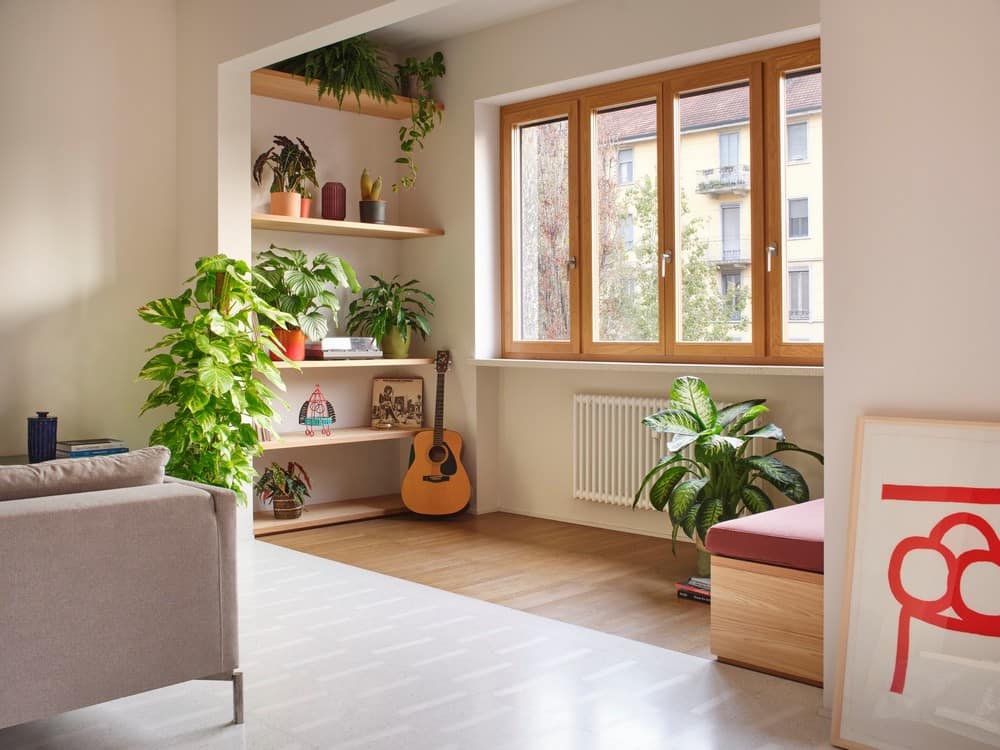
Non-trivial space, of rooms that open other rooms. For a more mysterious and lively domestic life than that of Existenzminimum fiction.
The assassination of the corridor leaves the field free to the forgotten spaces of the vestibule, the writing nook, the dressing room, the boudoir, the bathroom, the kursaal, the playroom, the alcove, the conservatory, the laundry, the galley, the bar. The inhabitants of this house can hide in the intimacy of these rooms; or choose, when the time is ripe, to meet in the spacious common “piazza” of the living room.
The large space for convivial activities reflects the light of three large windows; left without curtains, like those of northern cities. The backdrop of this space is dominated by the large island with five gas burners, the real hearth of the house. Its colours were decided seventy years ago by a famous Bolognese bottle painter.
This space wants to remain ambiguous, in order to accommodate more formal events when necessary. Is it really a kitchen? Or is it the extension of the living room? Thus a long sideboard, the colour of a deep red wine, hides the many tools of the gastronomic art; while a long sand-colored boiserie, in addition to containing the basic needs of the kitchen, can hide the sink, transforming the space into a ballroom.

More than once, returning to this house, we found ourselves caressing its surfaces, in a distracted and instinctive gesture. Hand on matter. Enlightened, we realized that matter has become a medium, one between our hand, the one that uses it, and the hand of whoever gave it shape. Thus, the embossed lacquers resound like velvet when touched by the hand and speak to us of the moment in which sand and colour were combined.
The veining of the elm that covers the kitchen reminds us of the sensitive choice of logs combined, with the fresh and smooth surface of the concrete surfaces, an expression of the patient movement of those who smoothed them.
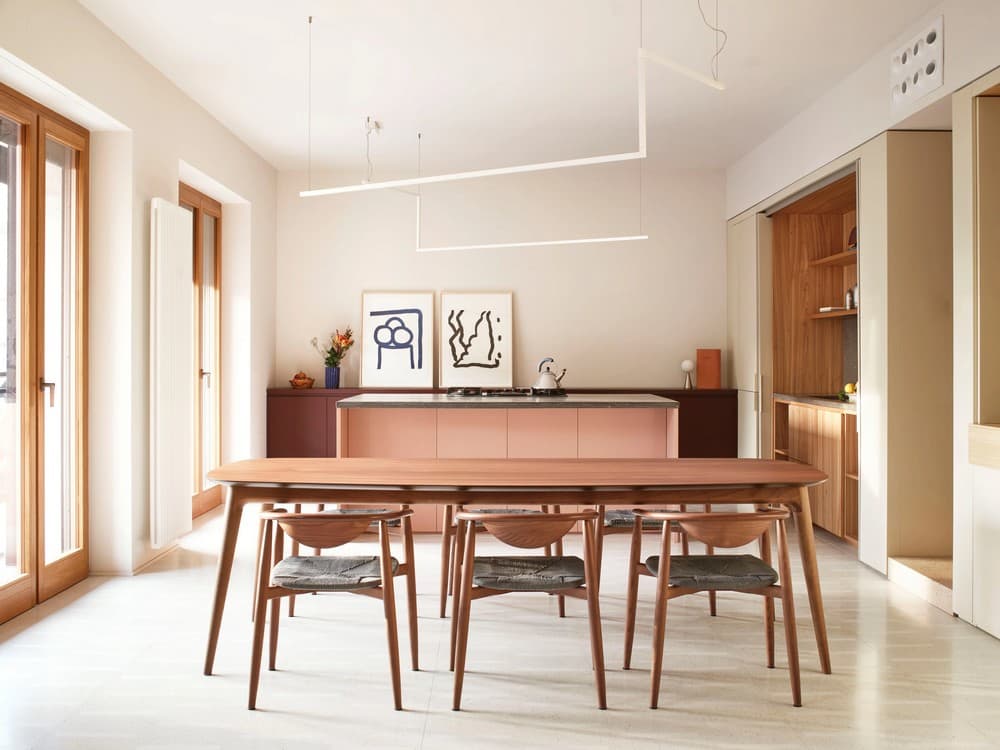
These worktops are exceptional artefacts: unique fusions of black cement embellished with a Verona red, the result of a passionate refinement artform, which has seen many samples which later ended up in the attic, a physical yet unforgotten archive of process.
At the other end of the “piazza”, in juxtaposition, a more intimate environment devoted to music and acts of contemplation. Part bow window and part winter garden, this place is characterized by the presence of a small wooden alcove whose deep seat invites a lazy reader. The blown glass lantern and the velvet complete the unconscious design of a railway landscape where, aided by your imagination, you could feel yourself on a journey. The intimacy of this world is signaled by the change of floor which, in scented wood, approaches the minerality of the most important floor of the house.
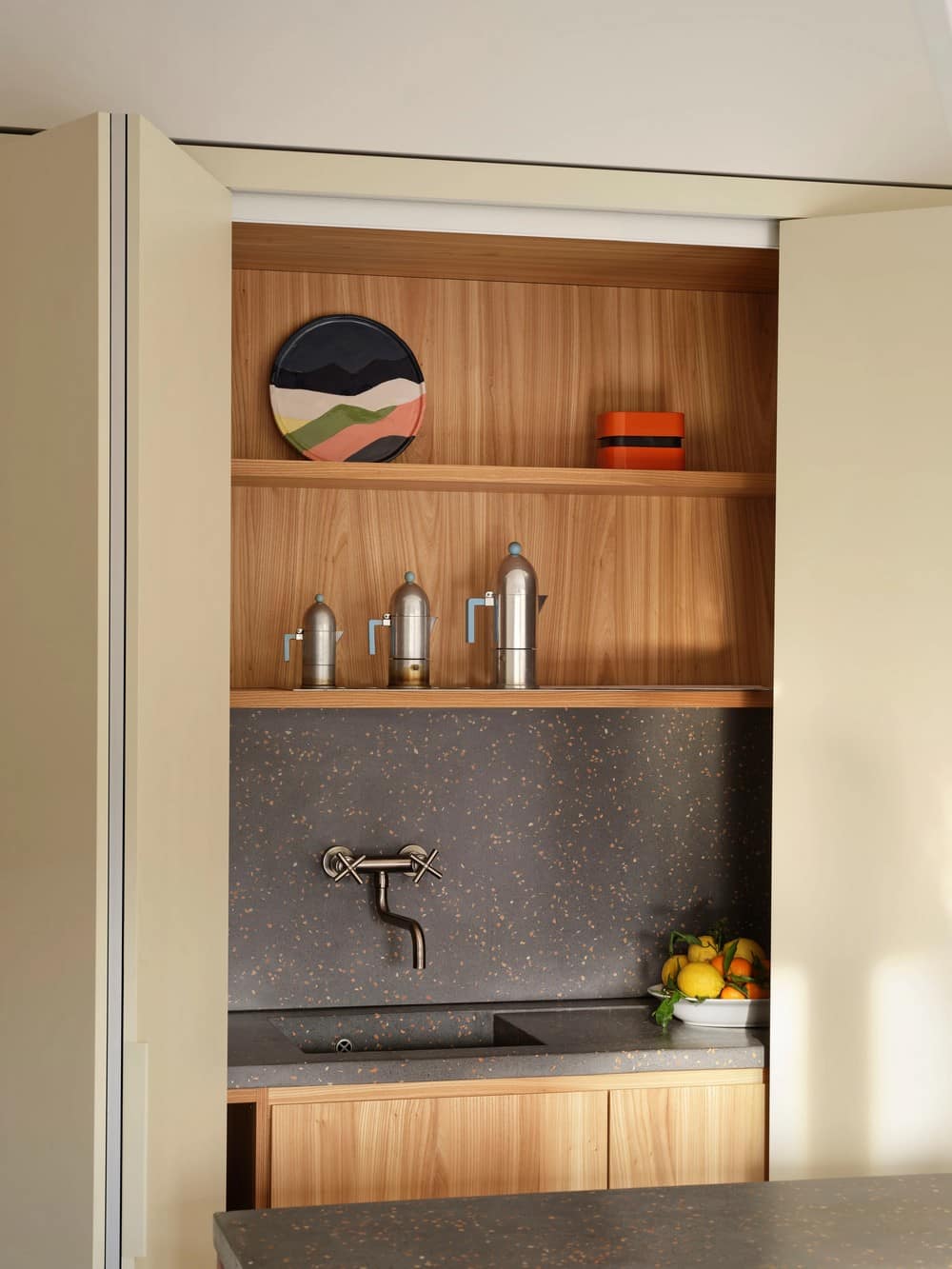
The design of the highly precious flooring is given the task of defining the boundaries of the most social space in the house. For this reason, from the beginning, we hoped it could be special. While our hand sought to trace an original sign in the world of shapes, the house in itself revealed a long- hidden secret. The decommissioning of a worn- out parquet revealed before our eyes a vibrant composition: the structure of the joists “sown” by the hand of a forgotten craftsman designed a mesmerizing texture. Instinctive and unconscious beauty.
The design of the new terrazzo floor and thassos tiles is uncertain and “a little wrong”, and is meant to be an ode to that forgotten hand. In a simple yet bold gesture, we make a hero of a single step. A simple insertion, like the single lost piece of a puzzle containing 1000s, defines a transitionary experience. In contrast to the delicate white paving that flows beneath, the warm pigmented stair creates a space of spontaneous on-the-go conversation, or even a small seat for a moments pause.
This threshold appears to hold hands, gently, delicately, with a warm and cosy room within the greater room; not dissimilar to that of the studio nook for a future photographer. Perched lightly above the living space, tracing the outline of an old bathroom window that once was, a new framed view immerges, creating a private writing desk and drinks bar.
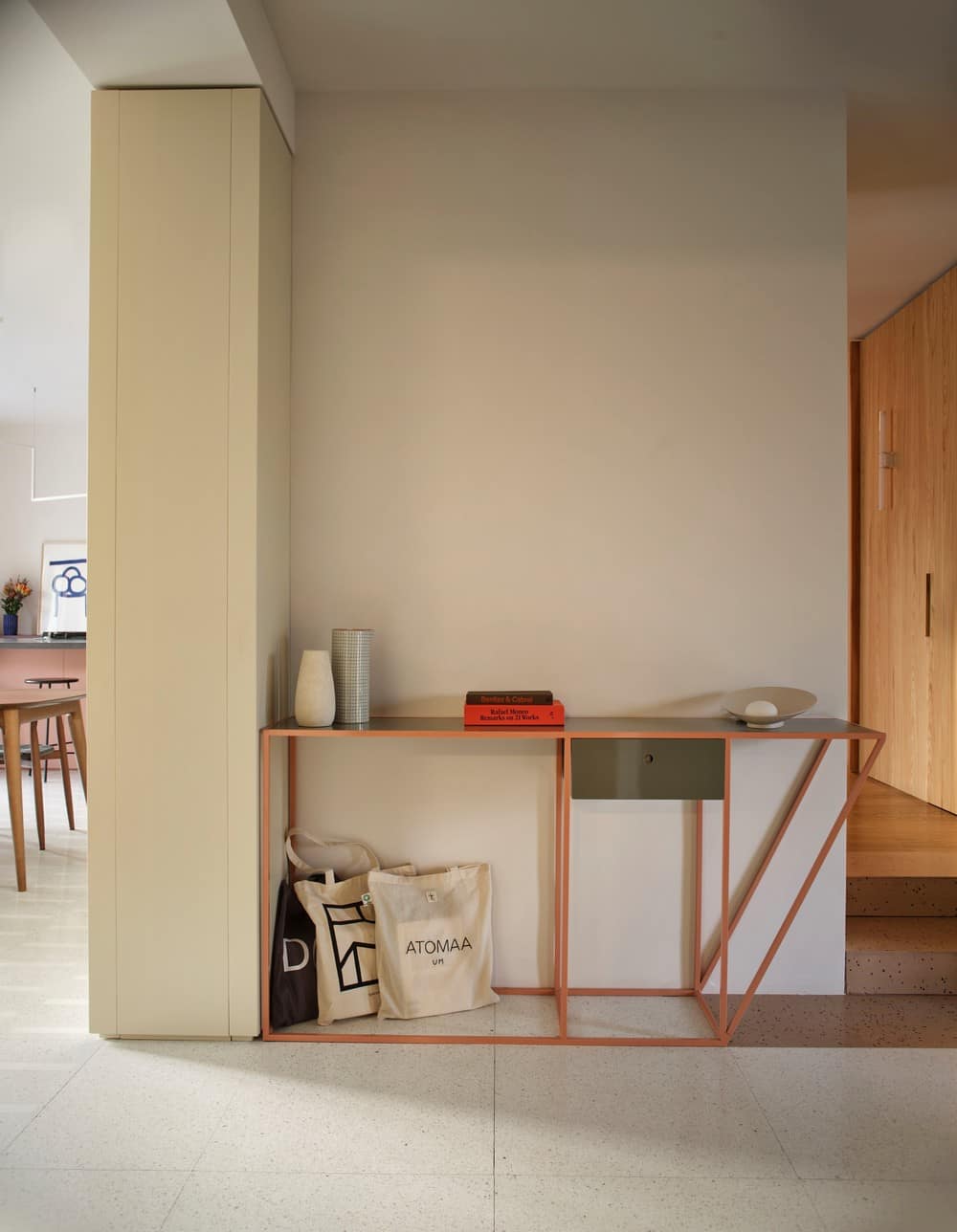
The passage between the more social areas of the house and the more intimate ones is accompanied by the sensitive experience of the scent of wood. It takes place through a mysterious room, covered in a boiserie: the panels hide and disclose other rooms – some of services such as galley and laundry, others a bit special (like the bar) dedicated to the pleasure of guests. Behind one of these secret doors, sits a compact guest washroom, bathed in a vibrating wash of zellige tiles; a lively patchwork of individually handcrafted tiles immerges, each one different from the other.
A custom-made concrete wash basin stands proud, it’s presence like a stone monolith paying tribute to a moment in history, while from above, a high-level window brings in soft natural light.

Through another openable panel, access to the matrimonial suite is granted. Continuing its warm timber finish, light beams into the compact walk- in wardrobe, through a large opening with a bench at its base. Separating the walk-in wardrobe from the main bedroom, yet another precious element in pigmented concrete sits atop a warm timber floor. This inserted element, also taking on the function of a small seat, spills ever so slightly into the bedroom, inviting the arrival of its guests.
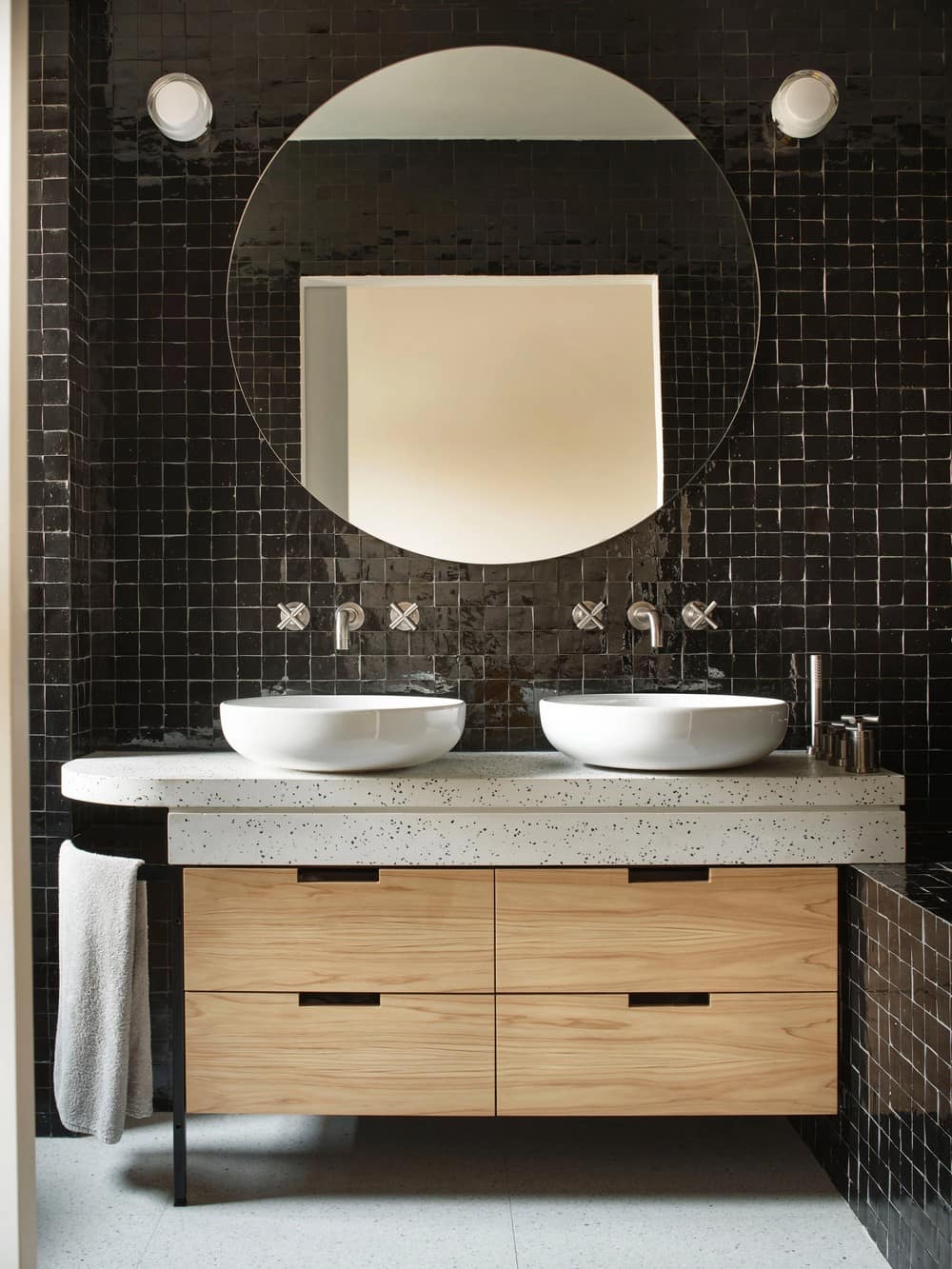
In this compact and private world, composed of 3 rooms in 1, the en-suite bathroom is thought to take on the function of a private spa. For the sake of simplicity, two bold contrasting colours are used in two main forms. The walls, shower and large bath for two are wrapped in black zellige tiles, reflecting a shimmering light, both natural and artificial, depending on the time of day. A custom wash basin in white concrete, formed at the hands of an experienced artisan, rests lightly on the dark grounded bath volume. A sense of peace, silence and tranquility can be felt, in a space of real purity.
In an opposing world, while still a space of purity and self-care, an exotic and vibrant green zellige tile pays reference to those great façade designers of the 60s; material raincoats which still hold strong against a rapidly changing urban skyline.
